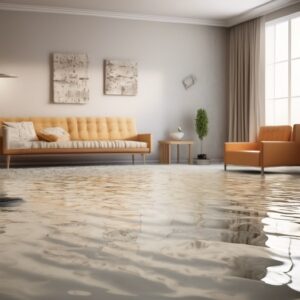Maintaining a pristine environment is essential for hotels to uphold their reputation and ensure guest satisfaction. However, one common issue that can arise and significantly impact the guest experience is water damage to carpets. Whether from leaks, spills, or floods, carpet water damage can lead to mold growth, unpleasant odors, and structural deterioration if left unaddressed. In this article, we’ll explore three telltale signs that hotels should watch out for to identify carpet water damage early, allowing for prompt mitigation and restoration.
Discoloration and Staining
One of the most obvious indicators of water damage to carpets is discoloration and staining. When water saturates carpet fibers, it can cause dyes to bleed and create noticeable stains. These stains may appear as dark patches or rings on the carpet surface, particularly in areas where water has pooled or absorbed over time. Additionally, prolonged exposure to moisture can lead to mold and mildew growth, resulting in green, brown, or black discoloration. Hotels should regularly inspect their carpets for any signs of discoloration, especially in areas prone to water exposure such as bathrooms, kitchens, and near windows or doors.
Foul Odors
Another unmistakable sign of carpet water damage is the presence of foul odors. When water seeps into carpet padding or subflooring, it creates a damp environment ideal for mold and bacteria growth. As these microorganisms thrive, they release musty, unpleasant odors that can permeate the air throughout the hotel room or hallway. Guests may notice these odors upon entering the room or walking on the carpet, leading to complaints and dissatisfaction. Hotels should be vigilant in addressing any unusual smells promptly, as they may indicate underlying water damage that requires immediate attention.
Warping and Buckling
In addition to visual and olfactory cues, hotels should also pay attention to the physical condition of their carpets as a potential indicator of water damage. When carpets are exposed to excess moisture, they can warp, buckle, or ripple along the surface. This distortion occurs as the carpet fibers absorb water and expand, causing the carpet to lose its original shape and lay unevenly. Warping and buckling are especially common in areas where water has infiltrated from underneath, such as near plumbing fixtures or in basements. Hotels should regularly inspect their carpets for any signs of irregularities in texture or appearance, as these may signal underlying water damage that requires professional intervention.
Conclusion
Carpet water damage can pose significant challenges for hotels, affecting both the aesthetic appeal of their facilities and the comfort of their guests. By familiarizing themselves with the telltale signs of carpet water damage, hotels can proactively identify and address issues before they escalate. Through regular inspections, prompt maintenance, and professional restoration services when necessary, hotels can mitigate the impact of water damage and uphold their commitment to providing a clean, welcoming environment for guests. By staying vigilant and proactive, hotels can minimize the disruption caused by water damage and maintain their reputation as trusted hospitality providers.


